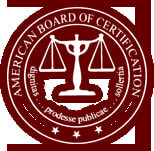|
During Covid-19, the Federal Government mandated that Federally backed mortgage lenders offer their customers forbearance plans.
You had a right to a COVID hardship forbearance if:
Your initial forbearance plan typically lasted 3 to 6 months. If you needed more time to recover financially, you could request an extension. For most loans, your forbearance could be extended up to 12 months. Some loans were eligible for up to 18 months of forbearance, depending on when your initial forbearance started.
(a) Modify your loan. (b) Refinance your loan. (c) File Chapter 13 to get caught up. Let's go through each. Assuming your lender wants to resolve your deficiency for a loan modification, and you qualify for one based on your income and expenses, they can be of two types. First, they could offer you a separate claim modification. This type of adjustment pulls your forbearance balance away and segregates it until your loan is paid in full. It collects no interest, and you are not required to make payments on it. This is often the best outcome for these types of forbearance plans. However, one day, you'll run into that claim again when you want to sell, refinance or pay off your home in full. Be prepared for it as part of your long term plans, and also be aware that refinancing with that claim may be more difficult than without it. Second, they could offer that they modify your entire loan over 30 to 40 more years, including the balance of your forbearance. This is the worst of the two outcomes, likely increasing your payments each month and over time, the amount the mortgage company will receive with interest. It will be much higher than you would have paid had you stayed current. However, this option makes it more likely that you can refinance in the future. Your second option would be to refinance your home, but you may find it difficult to locate a lender who will work with you after a forbearance. You may need to wait 12 or more months with on time payments to qualify. While refinancing can look attractive, there are many downsides. First, the fees and costs that you might not notice get pumped into the loan, and you will pay tens of thousands of dollars on those over time. Second, oftentimes consumers will use a refinancing to pay off unsecured debt - essentially putting their home at risk over credit cards, and then paying interest over the next 30 years. It's a win for the creditors, but a loss for you, especially over time. Third, interest rates have gone up significantly recently. This can mean hundreds of dollars more per month than you would have paid during the pandemic. Your third option would be Chapter 13 bankruptcy. Many people have a negative view of bankruptcy in general thanks to the drum beat of negative press from the media and banks, and while it does hit your credit, it is often a perfect choice after major crisis like recessions and pandemics. Chapter 13 will help you get caught up, interest-free, over as long as 60 months. It will often pay your unsecured creditors as little as zero cents on the dollar, and resolve tax debt, vehicle payments and any other debt you might have. It is a one-payment plan, encompassing all of your debt, and often saving you thousands if not tens of thousands of dollars. It stops collections actions, stops foreclosures, and if your mortgage payment is too high to begin with, it can give you an opportunity to handle your other debt while requesting a loan modification within the safety of Chapter 13. If you have questions about any of these options, reach out to me personally so I can help you guide you on the best one to chose! - Jesse Sweeney, 248.719.5663
0 Comments
Your comment will be posted after it is approved.
Leave a Reply. |
AuthorJesse Sweeney is the President of Sweeney Law Offices, and an American Board Certified bankruptcy attorney licensed in Michigan and Colorado. He has been practicing for over 20 years, and has spoken on a variety of bankruptcy related topics. Archives
March 2024
Categories |
 RSS Feed
RSS Feed


